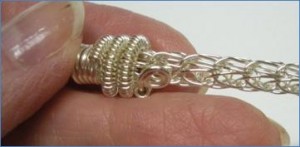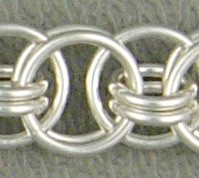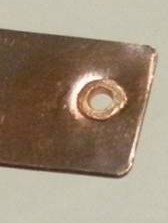- NEW DVD Series – Stone Setting with Bezels
- Tube Set Charm by Kim St. Jean
- Prong Basket Pendant by Kim St. Jean
- NEW DVD Series – Stone Setting with Cold Connections
- New DVD Series – Stone Setting with Wire
- NEW DVD Series: Introduction to Stone Setting by Kim St. Jean
- Featured Tool: Bracelet Bending Plier
- NEW Dvd by Eva Sherman
- Fun, Fast Fold Forming DVD Series
- Double Band Ear Cuff from Alex Simkin
Charting Your Creations
by Judy Ellis, Wirejewelry.com
Wire Jewelry Tip for May 30th, 2016
Charting Your Creations
by Judy Larson
Today we have a quick tip from Judy about using a few simple charts to help you track your wire for your projects.
Judy says:
Charting Your Creations
Just as with knitting, weaving or crocheting with yarn, everyone has a different tension on their wire when they are knitting, weaving, coiling or crocheting with it.
Different types and brands of wire react differently when you work with them. Knowing how each type of wire reacts when you work with it on different projects may make a difference in your choice of metal and wire gauge when creating a new piece of jewelry.
Each type of wire has a different hardness and “spring back.” For instance, dead soft copper is much softer than dead soft brass. Therefore, jump rings made with the same gauge wire on the same mandrel with these two metals will end up slightly different in diameter – the brass will be larger than the copper due to the “spring back” of the wire. After trying different wires, you may find that you prefer one brand over another of the same type of wire and/or one type of wire over another.
Tutorials generally give approximate wire lengths because we all have wire working tension, as mentioned above. Because of this, it is a good idea to keep track of how much wire you use constructing various jewelry items.
You probably will not worry too much about the cost of the wire you use when you create your jewelry pieces with base metal wires, but when you start using more expensive silver and gold, you certainly do not want to cut too little or too much wire.
If you keep a chart and/or notes on your projects, you can easily see how much wire you would need for a certain type of project and decide how much wire you would need for your next creation.
Coiled End Caps:
Years ago, before I started making them in metal clay, I could not find end caps I liked. This is my chart for copper and copper core wire end caps. Note: the 00 needle is a knitting needle.
Use the following charts and make your own to help keep track of wire types and lengths used in your creations.
Viking Knit Gauges/Sizes/Lengths:
Coiled Wire Gauges/Sizes/Lengths:
________________ Coil Wire Gauge _________________ Type of Wire
We will be bringing the FREE Pattern for Judy’s Coiled End Caps in the future – so check back!
Happy Wrapping!
![]()
Click to Receive Daily Tips by Email




























0 comments